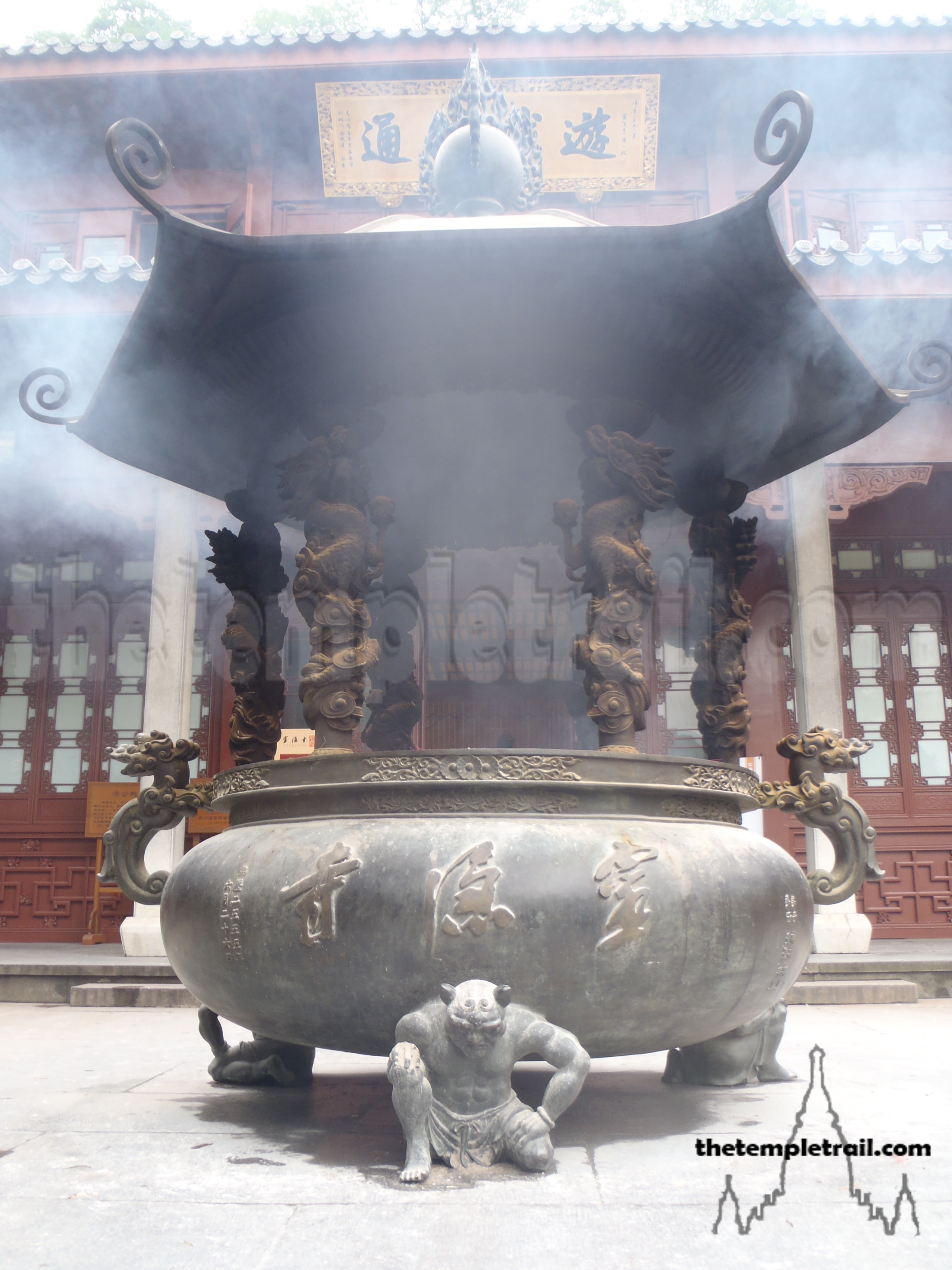You have left the bustling city of Yogyakarta, gone past ancient temples hidden in small back streets, flown by the crumbling Dutch fort in Solo and are now hurtling along a road through the greenest rice paddies you have ever seen. The atmosphere is hot and humid. The car starts to climb slowly upwards as you begin your approach to the massive semi-dormant volcano Gunung Lawu. As you steadily rise above the plains below the air becomes fresher and fresher. You twist and turn through small farming communities and zip through vegetable patches filled with organic chillies destined for a fiery sambal. The produce up on the volcano looks beautiful. It has been nourished by the volcanic earth; nature’s own fertilizer.
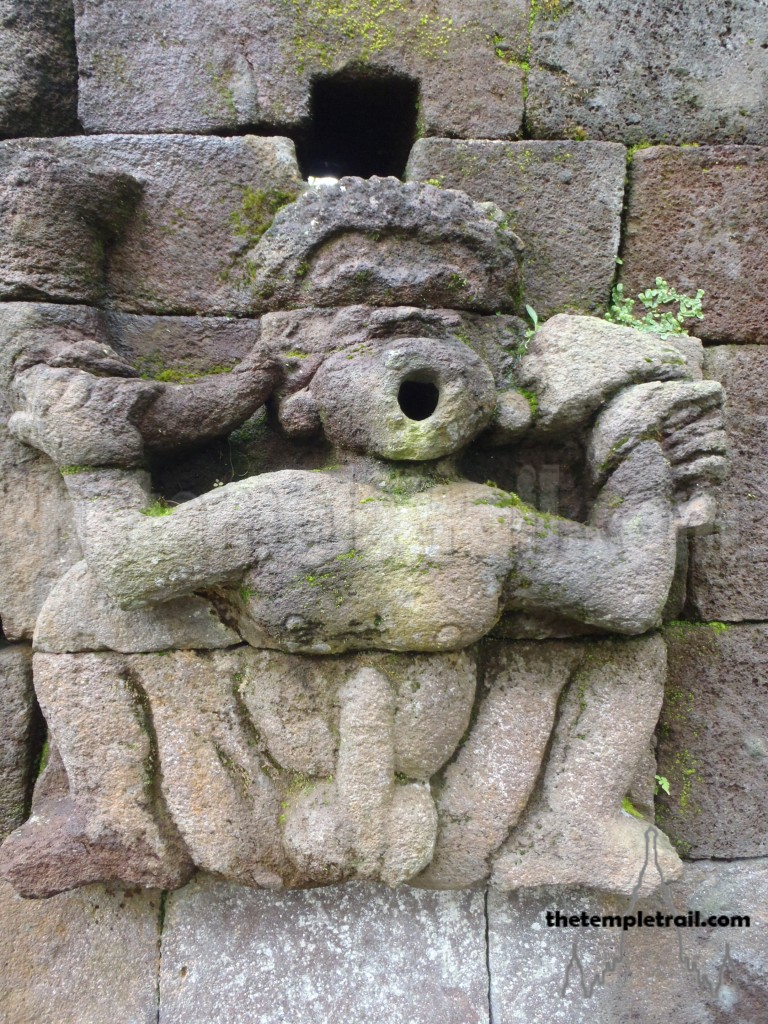
Higher up you hit the tea plantations and the scenery changes yet again. You are now diving up and down peaks and valleys on the volcano’s western slope. You are surrounded by an eternal sea of green. The clouds are now low and pregnant, the rains fall and the road is almost invisible from the heavy tropical shower. The way becomes precarious. The narrow mountain roads are no longer so charming, but a little terrifying. Your pace has slowed a little; your driver has made allowance for your strained faces. As if it was destiny, the sun fights back through the clouds as you reach the entrance to your terminus. The volcano seems calm and tranquil once more. As you step out of the car and take in the incredible panoramic view from the car park, you get a gritty, but energy recharging cup of Javanese coffee. Next to you is the gateway to Candi Sukuh; one of the most unique and beautiful Javanese Hindu temples, that will take you on a journey through the sexual tantra practiced in Java in the 15th century.
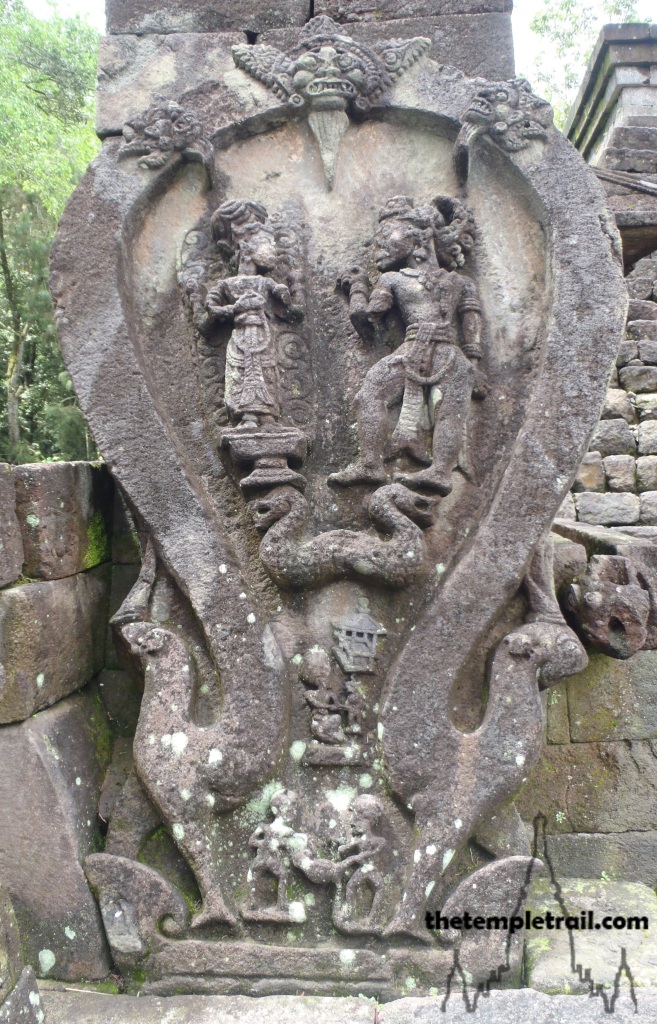
The rains have left a slight mist in the air that adds to the mysterious feel of the site. As you climb the first set of stairs to the main gate of the temple, you see that it is decorated with gruesome ogrish faces. You cannot pass through the gate as it is closed off, but as you come to it, you see that on the floor of the gateway is motif that fairly represents the temple you are about to visit. It is the image of a lingga about to penetrate a yoni. In layman’s terms: a penis about to enter a vagina. A Candrasangkala inscription at the gate reads ‘gate of the giants that swallow humans’. This is a reference to the monsters on the gate and also the date that the temple was built. It means 9 5 3 1 the Saka year 1359 (1437 AD) during the Majapahit Empire.
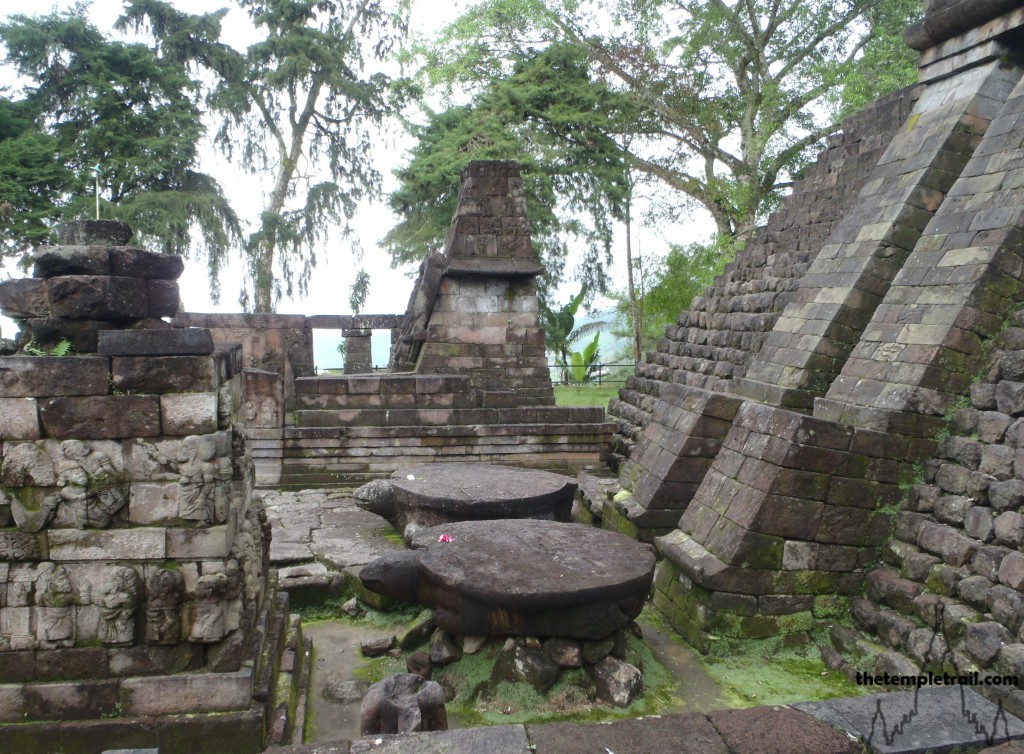
As you head up the path to the steps of the second terrace, you come to the damaged second gate and its inscription, ‘elephant’s tail biting priest’. This time we get a date of 1456 AD, so the phases of temple construction are clearly recorded. The Dwarapala temple guardians either side of the gate are also badly damaged.
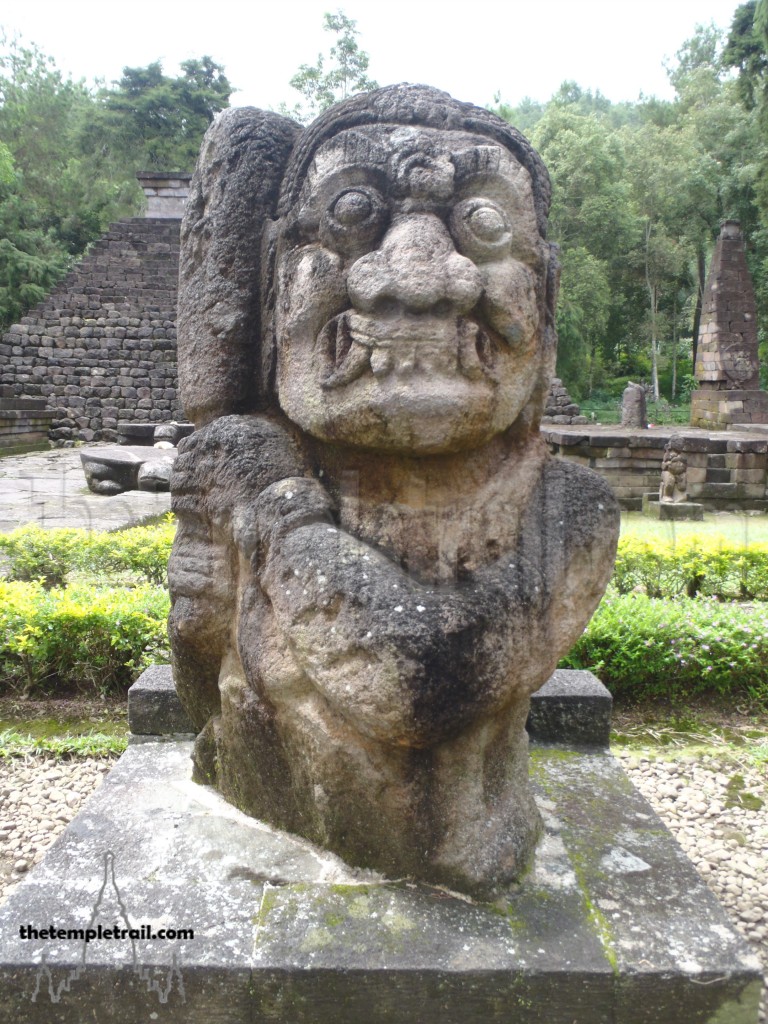
You walk up the ceremonial pathway and onto the third terrace. The pyramid in front of you is calling you over, but there is much to see before you climb its steps. The complex is a fertility cult temple that was built by tantric Hindus, so it is filled with graphic depictions of sexual spirituality. The first thing you come to is a set of reliefs on the left of the third terrace. These carvings tell the story of the Sudhamala and how Sahadeva, one of the Pandava brothers of the Mahabharata epic, saves the goddess Durga from a curse. In the central area, in front of the pyramid are some reliefs of the womb and a statue (now headless) of a man holding his erect phallus.

There are also some reliefs of Garuda (the bird-man) and the story of how he released his mother from slavery by taking the tirta amerta (elixir of immortality). Many depictions have pierced ears so that devotees could thread them with flower garlands. At the base of the pyramid are three turtles with flat shells that operate as offering tables or altars. They represent Kurma from Samudra Manthan – the churning of the ocean of milk (a very important story in Hinduism and a common theme in Hindu temples in Angkor as well). The pyramid represents Mount Mandarachala that, used as a churning rod, sat on the turtle Kurma’s back as the devas (gods) and asuras (titans), using Vasuki the king of the Nagas as the rope, churned the ocean of milk to find the fourteen ratnas (gems). One of these was the tirta amerta. When it appeared, the asuras and devas fought over it and Garuda snatched it and flew away with it.
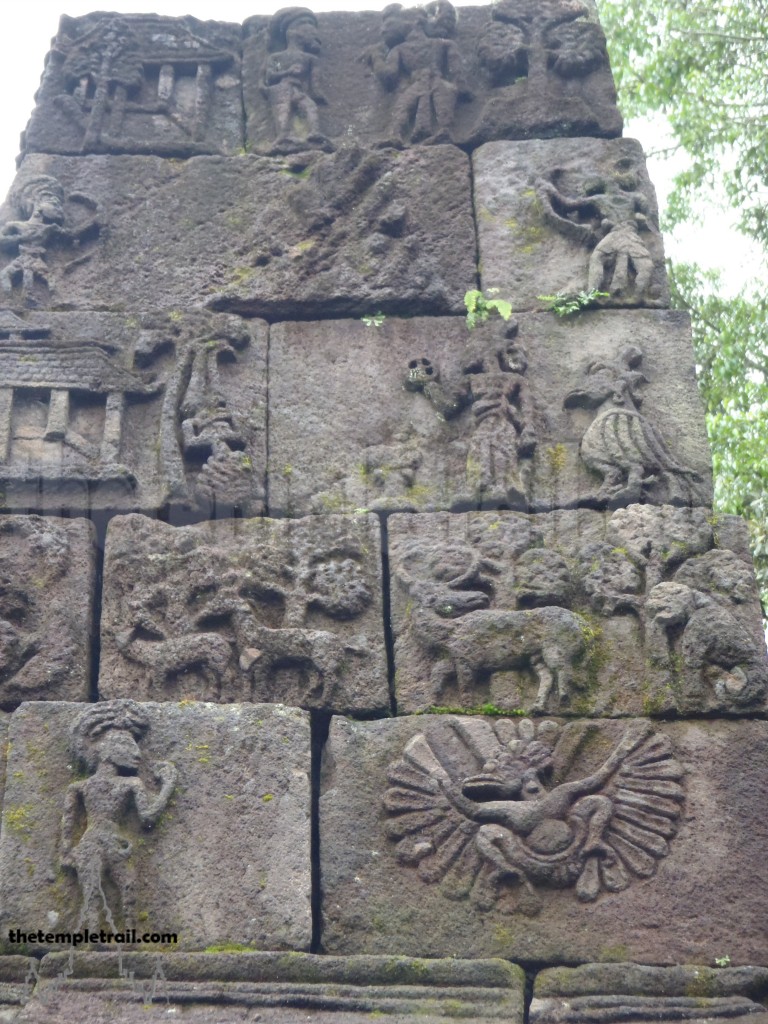
To the right of the pyramid is the forge scene stele. It depicts the forging of a keris or kris (the iconic Javanese dagger). The keris is important in this scene as it is the earliest known depiction of it. The blade of the keris represents the lingga and the sheath, the yoni. The significance of this is also that fire is a purifier, so the blade being forged is also symbolic of the purification of the lingga. In this particular scene Bhima (also one of the Pandava brothers) is the blacksmith and another brother, Arjuna, is working the ububan bellows. Between the two is a very strange crowned, dancing Ganesha. It is an unusual representation as not only is he dancing but, he has his genitals exposed and is carrying what appears to be a dog.
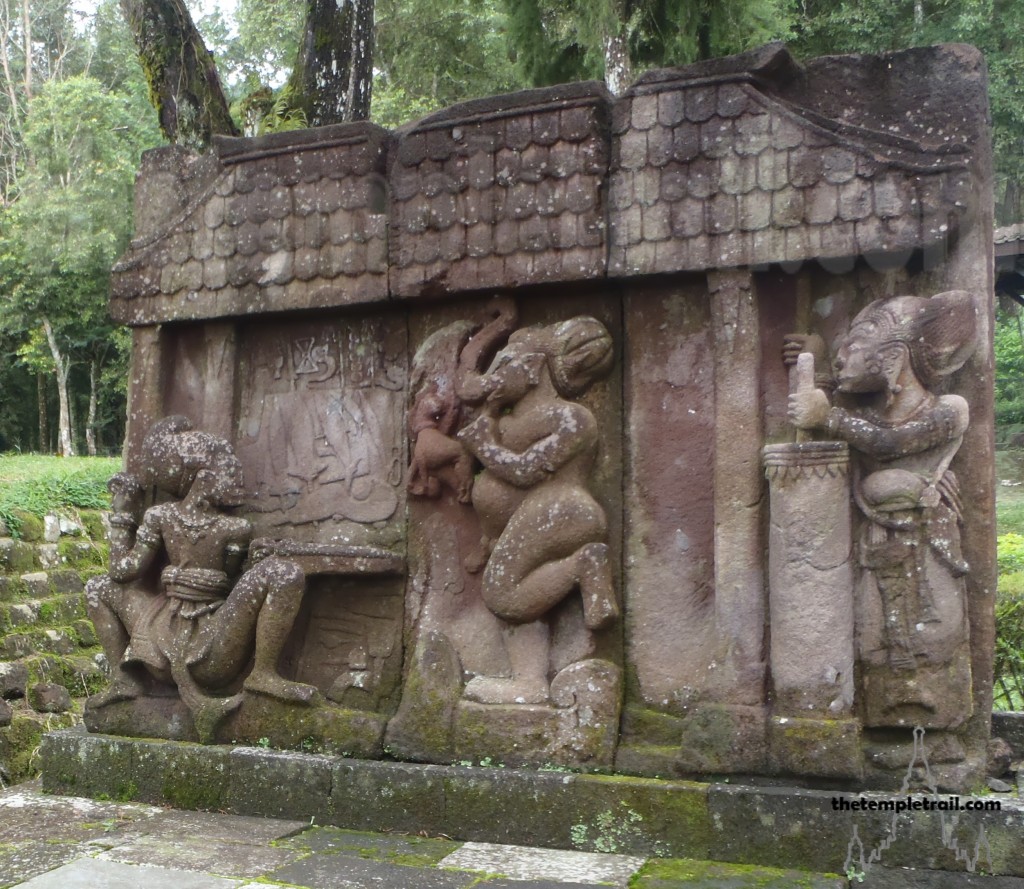
Heading back to the front of the pyramid, you stand between two of the turtles in the spot where the famous lingga found by Sir Stamford Raffles was discovered (it is now in the National Museum in Jakarta). The lingga has the feature that all of the phalluses on the temple have; balls under tip. These are representative of a custom of the time, that Majapahit men would have marble or gold balls implanted under the tip of their penis. The 1.8 metre lingga has four and also has an inscription (representing the vein) that reads: ‘Consecration of the Holy Ganges sudhi in … the sign of masculinity is the essence of the world’. Next to the inscription is another keris.

As you make your way up the one-of-a-kind trapezoidal pyramid, the passage is very tight. It represents the yoni. You climb the steep tight stairway to the top platform and emerge on the top. The stairs are said to be steep in order to test the young girls’ of the community’s virginity. At the top, there is an offering area where the lingga may have once stood. From the top, you survey the site as a whole. It is utterly unique and at your current location you have the vantage point that the ancient priests would have had looking down upon the faithful.
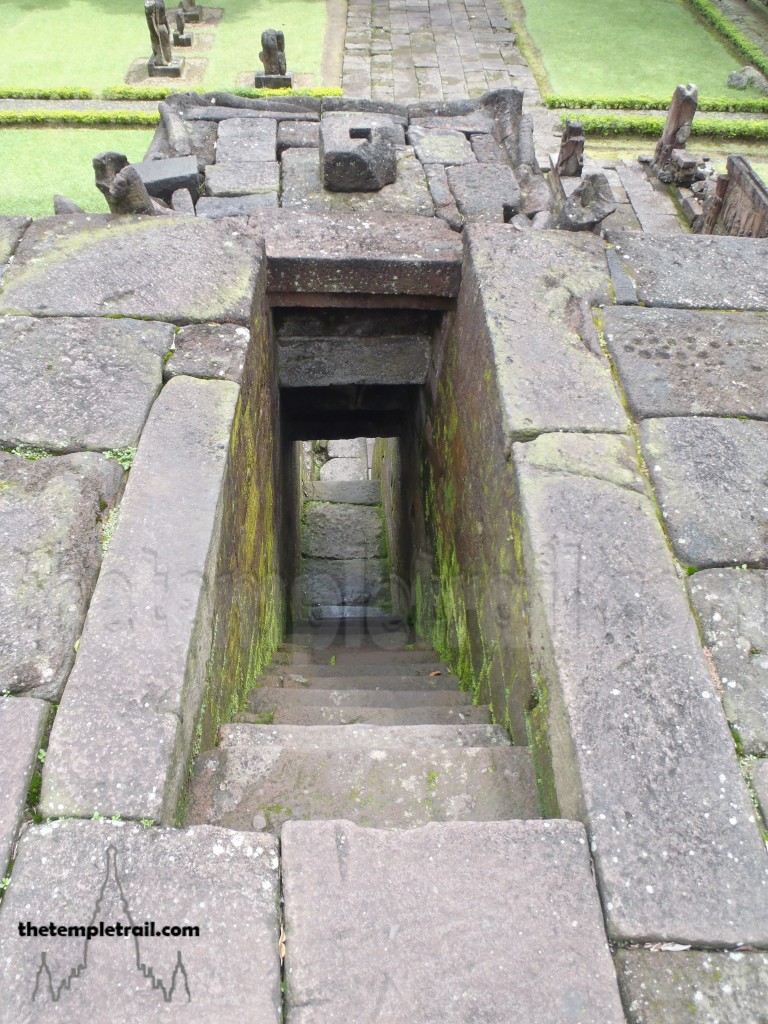
After climbing back down through the site and back to the car park, you shelter from the rain and drink another gritty cup of hot Java. The temple is once again shrouded in clouds of mist. The lowlands that lie at the bottom of the volcano are obscured and you feel like you are up with the gods in the middle of their ritual, sacred, transcendental orgy.

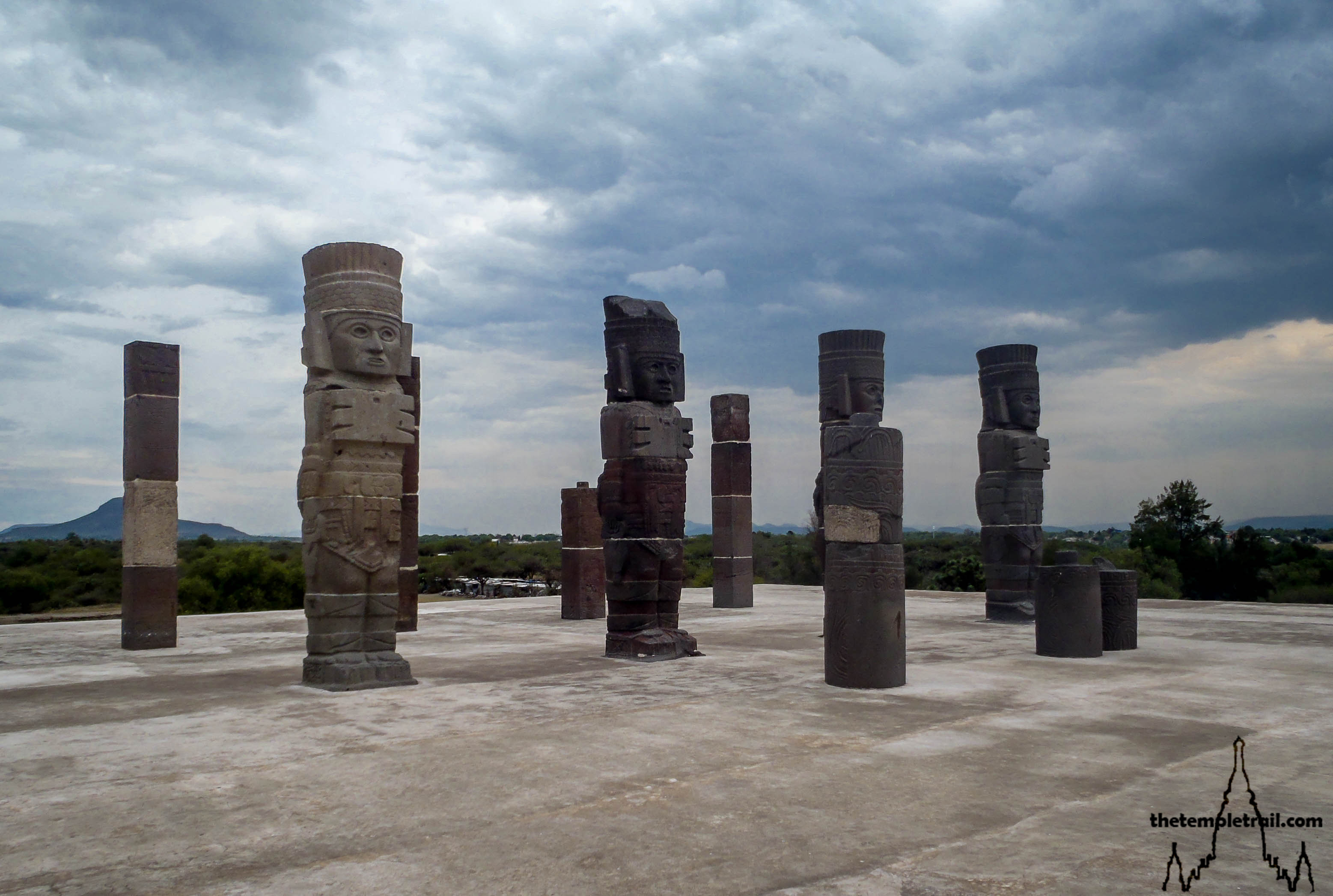 Tula
Tula